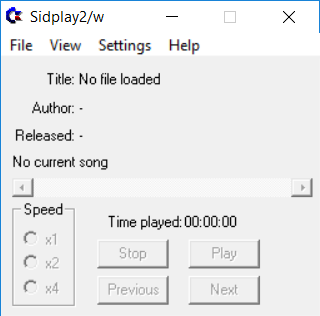

Port sharing – If you use a Unified Access Gateway virtual appliance for connections from outside the corporate network, by default the connection uses TCP port 8443 and optionally UDP port 8443.For more information, see Common Criteria Certification Report for VMware Horizon. Common Criteria – The evaluation process has been initiated.FIPS support – FIPS-ready libraries are available for Unified Access Gateway 2.9 or later appliances.Blast Extreme must be on TCP 443 only (as described previously for port sharing). The Horizon Clients can use either IP version 4 or 6. Dual IPv4/IPv6 support – When using Blast Extreme, Unified Access Gateway can be used to bridge between IPv6 VMware Horizon® Clients and an IPv4 backend and agents.SHA-256 signatures – Blast Extreme uses the latest security algorithms, including SHA-256.A certificate thumbprint is a cryptographic hash of a certificate. Blast Extreme can also use the certificate thumbprint of the Blast Secure Gateway or virtual desktop. Security certificates – For external connections, Blast Extreme can use the security certificate on the Unified Access Gateway appliance.

These encryption mechanisms apply to the H.264, H.265, and JPG/PNG codecs. TLS version and encryption defaults are routinely updated to reflect current best practices.
Download sidplay windows#
Flexibility with regard to configuration methods, which include using Windows Group Policy or Horizon Smart Policies included with VMware Dynamic Environment Manager ™.Feature parity with the VMware PCoIP display protocol.Intelligence to determine and accommodate varying network conditions.Ability to use either the TCP or the UDP network transport.Broad client support, including Windows, Linux, Mac, Android, iOS, Chrome, and web (HTML Access) clients.Ability to meet performance requirements for visually demanding applications when used with NVIDIA Tesla GPU–based hardware acceleration in the host.A consistent user experience across devices and locations while keeping corporate data compliant and securely stored in the data center.End-users access to their personalized virtual desktops or remote applications from company laptops, their home PCs, thin client devices, Macs, tablets, or smartphones.Readers should also have a solid understanding of desktop and application virtualization, as well as a good working knowledge of networking and supporting infrastructure, covering topics such as Active Directory, Group Policy, and supporting technologies. This guide is intended for IT administrators and evaluators who are familiar with VMware Horizon and VMware vSphere®. This guide provides a technical description of the Blast Extreme display protocol, including its benefits, limitations, and deployment options, for administrators who are considering using Blast Extreme in their organization today. Blast Extreme is included with VMware Horizon®, the latest generation of VMware desktop virtualization and remote application-delivery software. Blast Extreme is a display protocol built by VMware to deliver an immersive, feature-rich experience for end users across devices, locations, media, and network connections.

Display communication protocols provide end users with a graphical interface to a remote desktop or published application.


 0 kommentar(er)
0 kommentar(er)
